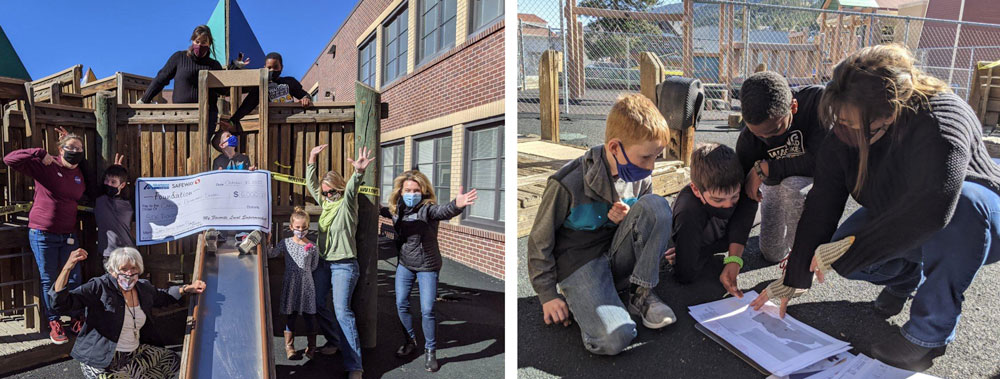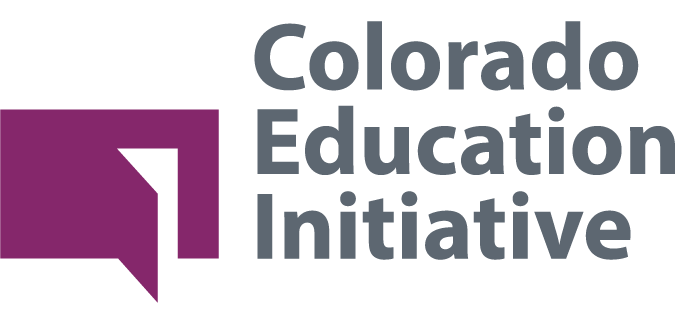RISE Grant Brings COVID Impact Recovery Ideas to Life in Clear Creek
January 22, 2021
By Susan Paulsen, CEI Strategic Communications Manager
Clear Creek School District (CCSD) is a rural district serving just under 700 students, located 35 miles west of Denver. CCSD serves students in Clear Creek County, which was recently identified as #13 in the nation for where COVID will have the most devastating long-term economic impacts. Superintendent Karen Quanbeck has been pursuing options to renew student engagement and, not just restore the school environment, but also expand it to be further based in community collaboration and learning opportunities that extend beyond the traditional classroom.
“Community is important, and feeling connected is a protective factor for many of our students and families. COVID has reduced the opportunities for kids to be involved in easily accessible ways, and has impacted our most vulnerable students disproportionately,” said Quanbeck. “Through all of this, we have learned that the pre-pandemic learning model is no longer relevant, and that members of our school community are feeling isolated, disempowered, and disengaged.”
As they consider how to move forward, leaders at CCSD are formulating a recovery plan that will build on existing strong community partnerships, and connections that have been made with families through the Clear Creak Accountability Committee (CACC). “We need to harness our collective energy to reimagine resource alignment, professional learning for staff, learning experiences for students, and ways to engage in authentic partnership with families,” Quanbeck said.
Last fall, when the governor announced the Response, Innovation, and Student Equity Education (RISE) Education Fund, CCSD submitted a proposal focused on the emerging recovery plan. A grant from the RISE fund was awarded, and development of CCSD’s recovery plan is now well underway, with a roll out of plan components scheduled for Fall 2021.
The district is well-positioned to dive into the logistics of the recovery plan as a result of participation in the statewide Homegrown Talent Initiative (HTI), according to Quanbeck. HTI provides support for rural school districts to develop and strengthen access to high quality, career-connected learning experiences for students. This collaborative effort breaks down silos between schools, businesses, and municipalities, and provides a diverse array of students in Clear Creek the opportunity to develop skills based on their passions and community contexts.
Through the HTI work, CCSD conducted hundreds of empathy interviews with staff, families, community members, and students – including those who consistently presented as disengaged in school. “The interviews confirmed that relevant, meaningful learning experiences were urgently needed,” Quanbeck said. Students told us they wanted experiential learning connected to their passions, they wanted to get involved in their local community, and they want outdoor experiences. When COVID hit and learning went remote, it became incredibly challenging to shift learning in this direction.”
CCSD continued to seek feedback last summer and during the fall semester, and some trends began to emerge: students liked having both online and in-person learning within the same week, and parents liked virtual conferences as they were more efficient and personalized. These findings provided direction and perspective about focus areas the recovery plan should incorporate, including three main themes:
- Relationships and Connections–family partnerships, student connections, and community connections;
- Choice and Voice–opportunities for distance learning with instructors from neighboring school districts and community colleges, and expansion of class options for students; and
- Experiential Learning–experiences to engage students in their learning, connected to local economic needs and future work opportunities.
“The biggest priority is that learning looks different and has meaning; that kids might be in the classroom or they might be in downtown Idaho Springs at a city planning meeting… that we as a district have built out a sustainable system where kids engage in learning experiences that are not traditional seat time… and more than anything, that kids are excited to be a part of those learning experiences,” Quanbeck said.
Students are active participants in the creation of the recovery plan, and they will also become part of a collaborative network that will strengthen family and community partnerships. This network includes local businesses, service organizations, and education partners.
“Including students in the design of the recovery plan will help them understand that they connect to the world beyond themselves and their school, as CCSD’s recovery plays an important and parallel path to Clear Creek County’s recovery,” Quanbeck shared. “Our businesses need skilled workers. As students see themselves as part of the future workforce, they can inform us about what they need to prepare for life after graduation.”
Quanbeck engages in regular conversations with local business owners about opportunities for kids to become involved in apprenticeships and internships, and that helps build on the idea of economic recovery. Deep community connections exist, including relationships with graduates from CCSD, who are now business owners and civic leaders.
“Our community is voraciously seeking us out because they’ve got opportunities for our kids. Right now everyone is really open-minded to it, the fertile ground is there, and we’ve got some things happening, but it needs to be permanently established as how we do business,” Quanbeck said. “It takes time, and it takes people talking about it out loud, multiple times; it takes structures and organizations that exist. We’ve got a really strong Rotary, a strong group of county commissioners and other officials, and a strong economic development council. Our library district takes ownership in the community, our Clear Creek Metropolitan Rec District, which is governed by a board of directors, also takes huge ownership. They feel responsible for ‘how can we provide opportunities for kids.’ To me, that’s an amazing mindset.”
 The local Safeway provided a donation for the Carlson Elementary playground project. Pictured here are the kids who are helping with the project design, and the architect working with the student design team.
The local Safeway provided a donation for the Carlson Elementary playground project. Pictured here are the kids who are helping with the project design, and the architect working with the student design team.
Empowering students to partner in the design of the recovery plan will also provide them with experiences that align with the attributes of CCSD’s graduate profile, including leadership, adaptability, critical thinking, communication, adaptability, and character. That said, learning and community collaboration will look different for every student, Quanbeck says.
“It comes down to trust. We have the kind of community that looks out for each other – we have 52 graduating seniors, to frame it a little bit. When you look a kid in the eye and say, ‘you can do this, and I believe you would be of value to this organization,’ that can be life changing for young people. Every kid has something amazing to offer and they don’t always see it, and sometimes we have to help find it.”
Key outcomes of the recovery plan design and implementation will be increased student engagement through real-world, relevant, community-based learning experiences, indicated by:
- Students stewardship of their community and each other ;
- Perseverance, grit and determination to push through challenges;
- Compassion, communication, and teamwork skills to lead and work with others from different backgrounds; and
- Confidence, curiosity, and empowerment to strive for more.
As the recovery plan is rolled out, CCSD will leverage the evaluation tool originally put in place for HTI, which includes measurement of both short- and long-term indicators. Through this tool, implementation activity outcomes, student outcomes, impacts on family and community, and shifts in mindset regarding innovation and equity will be captured through quantitative and qualitative indicators.
“We must ignite the potential of all students, including our most vulnerable students: those living in poverty, those experiencing food and housing instability, and those feeling isolated and disenfranchised,” Quanbeck said. “It is these students in particular that must name and design the future they desire as we forge our path toward a reimagined school experience.”
Quanbeck is enthusiastic about the potential that stems from creating and applying the recovery plan.
“We are taking our learning from the pandemic and really thinking about not compliance-driven learning experiences, but meaningful, community-connected, authentic learning experiences. Test scores are important, but how cool would that be to create a differentiated, tailored, accountability, like a profile based on what is it that families want to know about the district, about their schools, and about their kids? That is the ultimate family-community partnership.
